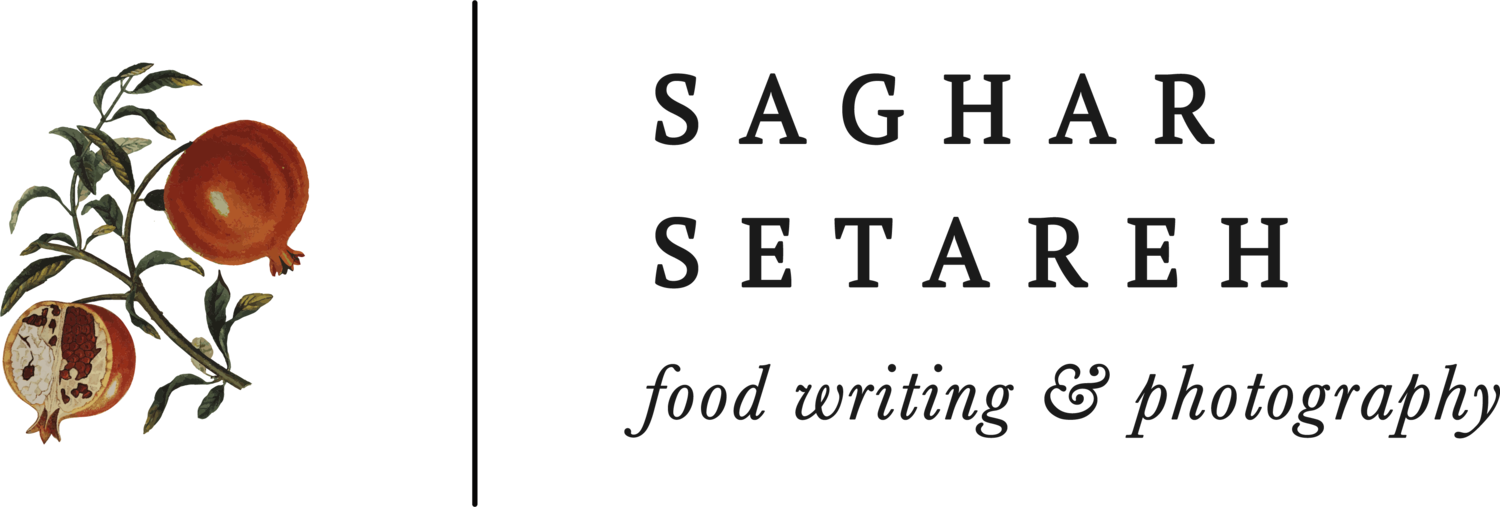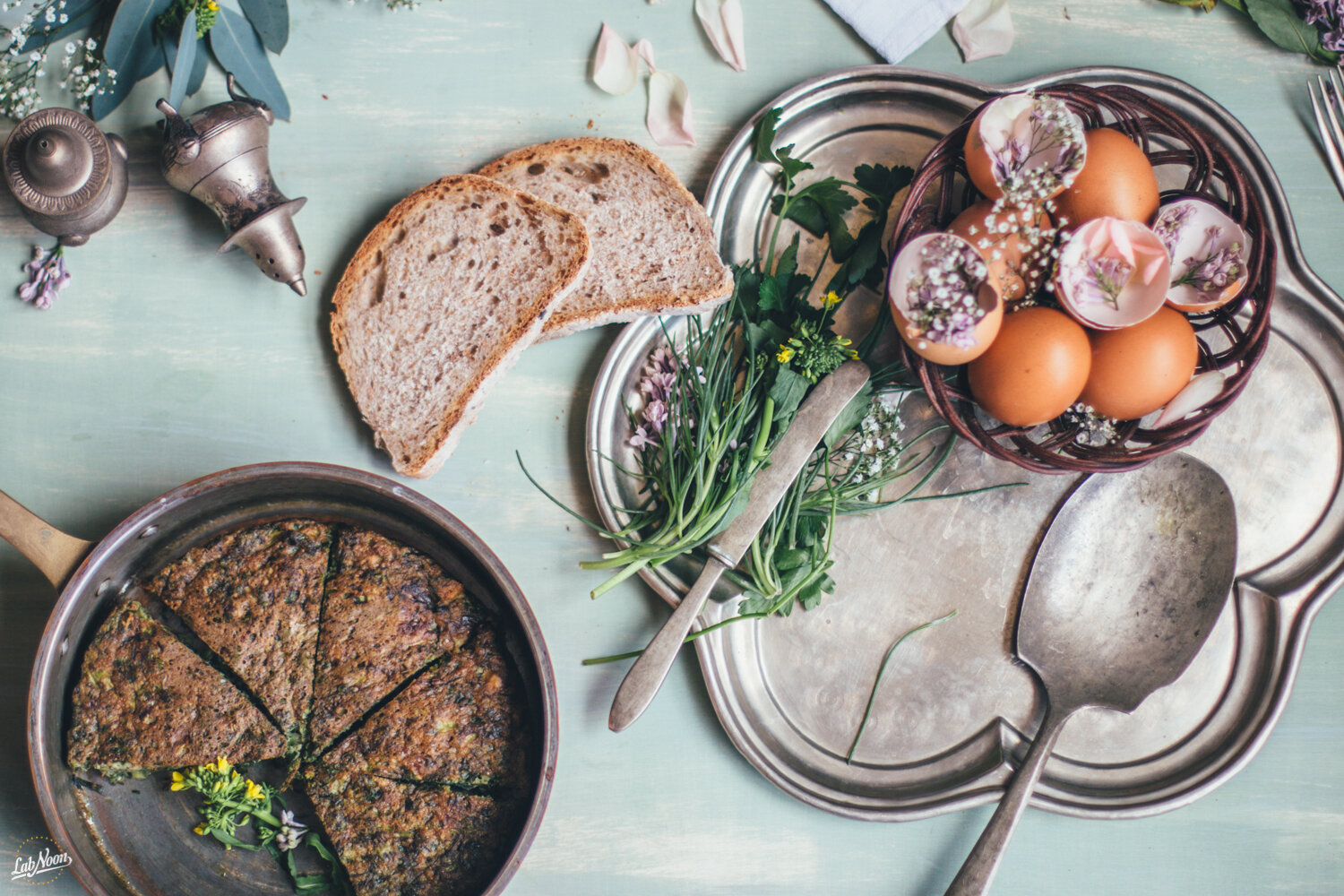IMITATING ‘Kuku Sabzi’ to celebrate Spring, Norouz and Easter
Sale No Mobarak (Happy New Year!)
I thought I’d started by saying that this has been un unusual Norouz; The Persian celebration of Spring and therefore the start of the new year. Year 1395, if you’re curious. But then I thought, what was quite unusual about it anyway? I have been celebrating my “Sal Tah’vil“s (That second the Earth enters enters March equinox) here in Rome for eight years now. Sometimes alone, when it occurred in unlikely hours to celebrate –like 5.30 AM as it was this year– but mostly accompanied by good friends. Like almost all Iranians around the world, for the occasion we enjoyed a good dish of ‘Sabzi Polo ba Mahi‘; Persian style pilaf with fresh herbs such as chives and dill served with fish.
Maybe what was unusual about this year’s Norouz was that I was so caught up in other matters of life, that I failed to stop a moment and and breathe in the arrival Spring and the new year? Maybe because it is impossibile to get fully in the mood of the most significant holiday you’ve grown up with in a place where almost no one knows what you’re talking about? Or maybe because Spring arrived so early this year to Rome that by the time we got to Norouz we were already too used to nice weather, greens and blossom on the trees. Maybe all of it.
As for food, apart from those tiny little biscuits and pastries in one billion varieties and huge bowls of flavored nuts and pistachios, I have more and less eaten proper Spring/Norouz food accordingly to tradition. Lots and lots of greens, seasonal and local. In Persian cooking we use tons and tons of fresh aromatic herbs, that much more than mere condiments. In fact, in so many dishes these herbs are the main ingredient, used in really large quantities. Dish such as Ghormeh Sabzi (herb stew with beans), Kuku sabzi (herbs frittata), Ab Doogh Khiar (cold soup with yoghort) and many others fresh herbs such as mint, cilantro, parsley, chives, etc define the flavor of the dish.
The same attitude characterizes most of the simple dishes of Easter here in Italy. On the large banquets of roasted lambs there are always simple savory pies and frittatas made with fresh asparagus, artichokes, ‘agretti’ (local Roman greens called saltwort) and broccoli e broccolini (small broccolis called broccoletti in Roman dialect).
That’s why I thought Kuku Sabzi, the Persian style frittata with fresh herbs, is the perfect dish for the occasion. Nothing extraordinary as a matter of fact; In most cities of Iran, Kuku Sabzi appears right next to herbs pilaf and fish on the Norouz menu. The original recipe contains parsley, chives, coriander, dill, spinach, lettuce, fenugreek leaves and almost each family varies the quantities regarding their culinary memories.
The internet is full of different versions of this dish as it happens to be one of the most famous and loved Persian recipes. The Kitchn and Saveur have their own versians (plus there’s this special Norouz version on Savuer with rosa petals!) and there’s a full Norouz feast on Food52.
The big debate: Walnuts and Barberries or No Wanlnuts and Barberries?
You can generally divide all Iranians in two categories: Those who love their Kuku Sabzi with some walnuts and barberries inside and those who absolutely don’t want any walnuts and barberries inside. I firmly belong to the first group. But for my Italianized recipe, I used some dry cranberries instead of barberries. (I simply didn’t have any, and one should just able to substitute one type of berry with another. It’s not the end of the world!)
Finding the right fresh herbs, in the right quantities, and the cleaning and cutting them all is no easy task. There was a time when women bought kilos of all kind, cleaned them together, cut and sautéed and stored many bags in the freezer for months to come. Now, everyone buys ready-made, cut herbs mixes in the big cities. So this beautiful picture from Everyday Iran is something quite rare that reminds me of my childhood.
I let the market inspire me for this recipe, not having access to all the herbs and determined to use fresh, local produce. I chose some agretti, some broccolini, some parsley and some dill. The latter two are sufficient to bring that strong and fresh herby aroma to the dish. The agretti taste quite earthly, so only a tiny bit should be used.
The main difference between a Perisan Kuku and the Italian frittata is that there’s much more condiments comparing to the amount of eggs and there’s no milk or cheese. In fact, your Kuku Sabzi should be a very dark green.
KuKu Sabzi, Persian Frittata with Agretti e Broccolini
Serves 3
INGREDIENTS
300g mix of washed and trimmed broccolini, agretti, parsley and dill (or your local greens)
4 free range organic eggs
20g walnuts
20g dry cranberries (or barberries)
1 tbsp flour
1 tsp salt
2 tbsp extra virgin olive oil for cooking
INSTRUCTIONS
Chop the herbs in very tiny pieces and set aside.
Beat the eggs in a large bowl, add salt.
Add the herbs to the bowl of eggs, with the flour, walnuts and cranberries and mix until well combined. Don't worry if they mixture looks dry.
Heat the olive oil in a small pan. Check if it's heated enough by adding just one tsp of the batter to the pan. If it fried immediately add the rest of the ingredients with a high flame.
Lower the flame to middle, place the lid and put the flame to low and cook for about 20 minutes. Remember that all your greens need to cook.
With the help of a spatula check if the bottom of Kuku is well cooked. If yes, with the help of the lid and another plate, flip the entire kuku in the pan (add more oil if necessary.)
Cook until the other side is well golden as well.
Cut into wedges and serve with fresh bread, tomatoes (optional), and torshi (Persian vinegar preseves).
Nooshe jan!













